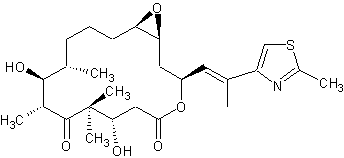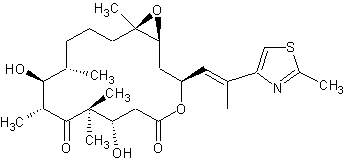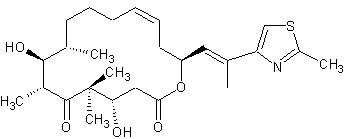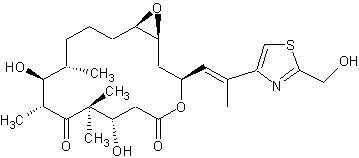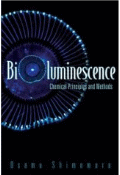|
Weitere Quellen: |
|
Spezielle Themen: |
|
Verwandte Themen: |
|
|
Epothilone |
|
Aktuell: Krebsmedikament auf Naturstoffbasis [Artikel vom 19.11.2007 - Wissenschaftler am Helmholtz-Zentrum für Infektionsforschung (HZI) in Braunschweig haben eine Klasse von Naturstoffen entdeckt, die von Bodenbakterien produziert werden und Körperzellen an der Teilung hindern.] |
|
Epothilon A |
|
Strukturformel:
|
Epothilon A (1R,5S,6S,7R,10S,14S,16S)-6,10-dihydroxy-5,7,9,9-tetramethyl-14-[(E)-1-(2-methyl-1,3-thiazol-4-yl)prop-1-en-2-yl]-13,17-dioxabicyclo[14.1.0]heptadecane-8,12-dione [IUPAC Name] C26H39NO6S - CAS Nr.: 152044-53-6 Daten: PubChem Nr. 448799 |
Epothilon B |
|
Strukturformel:
|
Epothilon B (1R,5S,6S,7R,10S,14S,16S)-6,10-dihydroxy-1,5,7,9,9-pentamethyl-14-[(E)-1-(2-methyl-1,3-thiazol-4-yl)prop-1-en-2-yl]-13,17-dioxabicyclo[14.1.0]heptadecane-8,12-dione [IUPAC Name] C27H41NO6S - CAS Nr.: 152044-54-7 Daten: PubChem Nr. 448013
|
Epothilon C |
|
Strukturformel:
|
Epothilon C |
Epothilon D |
|
Strukturformel:
|
Epothilon D (4S,7R,8S,9S,13Z,16S)-4,8-dihydroxy-5,5,7,9,13-pentamethyl-16-[(E)-1-(2-methyl-1,3-thiazol-4-yl)prop-1-en-2-yl]-1-oxacyclohexadec-13-ene-2,6-dione [IUPAC Name] C27H41NO5S - CAS Nr. Daten: PubChem Nr. 447865 |
Epothilon E |
|
Strukturformel:
|
Epothilon E |
Epothilon F |
|
Strukturformel:
|
Epothilon F |
|
Referenzen: |
|
- |
Beiträge zur Totalsynthese von Epothilon A und
Derivaten |
|
- |
Synthese-Studien zu Bausteinen von Epothilon und
Pelorusid A |
|
- |
Epothilone: Neue Wirkstoffe gegen Krebs |
|
Produkte und Firmen: |
|
- |
Datenbank: Kommerziell erhältliche Biochemikalien |
|
Sonstige Hinweise: |
|
|
|
|
Literatur- und Buchempfehlungen zum Thema Biolumineszenz: |
|
Osamu Shimomura Bioluminescence: Chemical Principles and Methods This book, written by a distinguished scientist in the field, provides a comprehensive overview of the biochemical aspects of all luminous organisms currently known. It is the first and only book that provides chemical information on all known bioluminescence systems, in a single volume. Some 35 different types of bioluminescence organisms are discussed in 10 chapters. The descriptions include: a history of the discovery of luminescence substances such as luciferins, luciferases and photoproteins; the process of research, explaining how luminescent substances have been isolated and purified; the properties of luminescent substances; and the reaction modes and mechanisms involved, as interpreted currently. Important experimental data and graphs are included in the book, making time-consuming reference searches almost unnecessary. Helpful advice for experimentalists is given in an appendix. World Scientific Publishing Company; 2006. |
